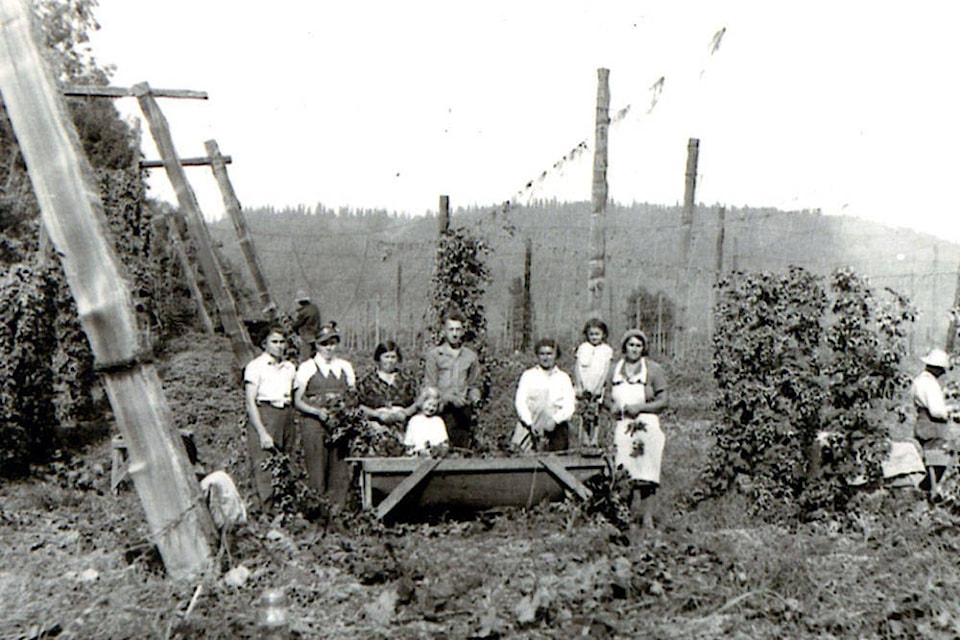The first reeve of the District of Kent was a hops man.
A. St. George Hamersley had established one of the first hopyards in Agassiz back in 1892, a farm located on the west side of Cameron Road between Hunt Road and the Fraser River. By the 1930s, Hamersley’s hopyard and indeed the entire industry in Agassiz had grown to be one of the top hop-producing regions in the province: with 300 acres of hops fields in production at its height.
The history of hops production had always involved the efforts of a vast, mobile working population to pick the flowers individually from the plant.
In the early days, these mobile workers were largely from Indigenous communities. People from Lytton, Lillooet, Powell River and even Seattle would come to Agassiz in August to work in the hops fields. Although some would live in small shacks or cabins that were built on the hopyards themselves, others would camp in tents. All would gather in the evenings and on Sunday for vast, inter-tribal competitions.
According to UFV researcher Keith Carlson, these competitions were similar in some ways to the Seabird Island Festival that takes place today: with different nations competing in sports like soccer and baseball, but also hybrid Indigenous sports like dry-canoe races (where contestants would race with heavy logs under their arms) and Coast Salish wrestling.
SEE ALSO: Seabird Island to celebrate 50 years of festival
By the Great Depression, local European workers also joined the hop picking teams, earning around $2.50 for a 10-hour day. Chinese residents also worked in Agassiz’s hop fields, many walking from Agassiz’s Chinatown on east Pioneer Avenue to the hopyards.
Agassiz’s hops were marketed across Canada following the Depression, with Kent, Golding and Cluster varieties being sold and shipped as far away as England. The BC Hop Company established itself on Whelpton Road, and some hop farmers set up shops near their fields for the workers. (Hamersley partnered with Carl Inkman, who owned a store in Agassiz, to set up a shop on his farm during the hop picking season. Workers were issued tickets for the hops they picked, which could be redeemed at Inkman’s store.)
In 1935, however, Agassiz’s hop industry began to decline. Downy mildew affected the most popular varieties of crops in the mid-1930s, and although sprays and dusts gave some relief to farmers, it increased their costs. The decline was exacerbated in 1948, when the Fraser River flooded much of Agassiz’s hopland.
By 1952, all of Agassiz’s hopyards were sold. The BC Hop Company moved to Clinton and the thousands of workers who descended on the community each fall were gone.
SEE ALSO: Craft beer hop farm on Seabird territory preparing for first harvest
Today, hopyards are starting a small resurgence in the Fraser Valley. A Chilliwack farm has developed the first Canadian-designed and -patented hops plant, called Sasquatch, and the Fraser Valley Hop Farms set up its production at Seabird Island, where it celebrated its first harvest in the fall of 2018.
Want to read more about the history of the District of Kent for its 125th anniversary? Check out agassizharrisonobserver.com/tag/kent-125/.
grace.kennedy@ahobserver.com
Like us on Facebook and follow us on Twitter
